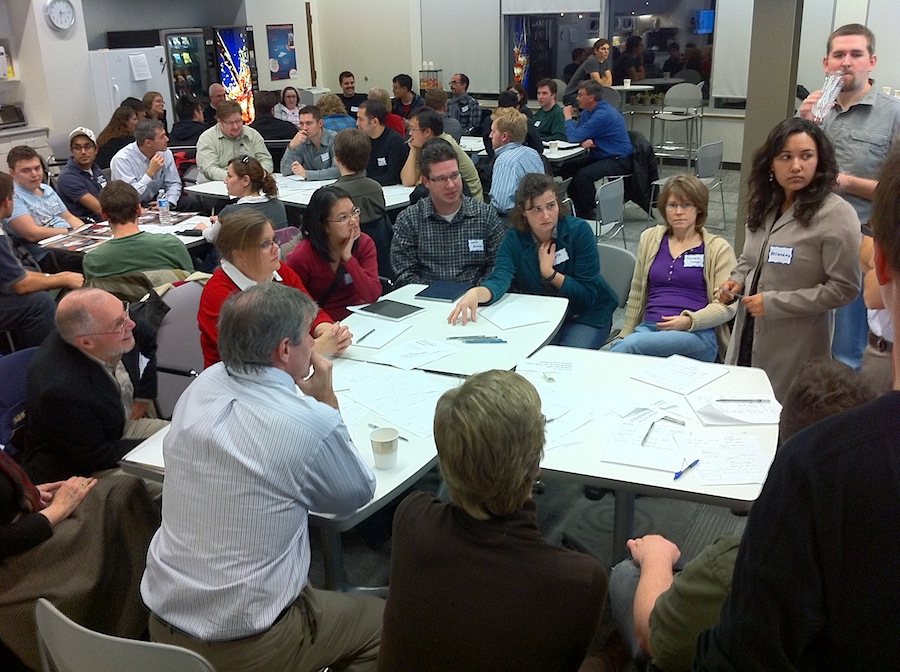
As expected, it’s been a busy month. As a result I’ve let some obvious blog posts slip. Time to catch up!
Last week’s uxWaterloo meeting was a particularly interesting one, as it featured a design workshop facilitated by Adam Baker, a user experience designer at Google.
Adam divided the large crowd (over 70) into groups of four and gave each group a design to complete as well as a constraint. It turns out that there were only two designs being worked on amongst the groups, though there were several constraints.
After a short period of design activity, Adam directed that pairs of groups merge. At this point we discovered that half the groups were designing a user interface for specifying a pizza to buy, while half were designing a user interface for specifying delivery instructions. We now had groups of eight, and needed to integrate our designs for pizza and delivery UIs into a whole design. We also had to handle new constraints, as each former group of four brought one to the new group of eight.
After another short period of design, the groups were merged again, resulting in larger groups of 16 or so, and a larger group of constraints in each group. The larger groups engaged in a final period of design work, after which each group shared their results with the larger meeting crowd. At this point it became clear that the constraints were quite varied: design for someone just like you; design for iPad; design for an old BlackBerry for use on a train; design for 9-year olds; design for blind; design for first-time users; design for 100 pizzas delivered to 100 locations, etc.
The exercise was a practical demonstration of some of the challenges for user experience at Google, where designing for everyone (many millions) carries with it many specific and even opposing requirements.
Adam followed up with a fine presentation in which he identified some of the design considerations that are important when designing for search at Google. He likened it to travel in the “back country”, where a premium is placed on solutions that are lightweight, field-repairable, multi-purpose, few frills (are fast), degrade well, and are adaptable.
Famously, Google places an emphasis on measurement, which informs design rather than dictating it. Amongst the kinds of questions they ask, and look to measurements for answers, are “How long…”, “How many…”, “How ofter…”, and “When…”. Nothing earth-shaking there, but the rigour with which they approach measurement is striking.
All in all, it was a highly successful night, and there may be similar uxWaterloo events in the future. Stay tuned.
